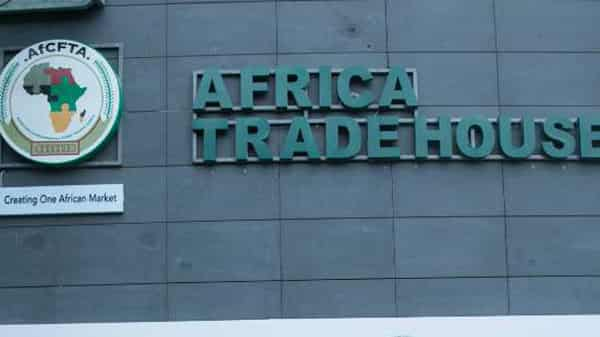African Continental Free Trade Area (AfCFTA), was launched in January 2021.

In the subsequent month, on February 5, 2021, 36 countries ratified the AfCFTA agreement. The main mandate of the AfCFTA is to harmonise the African market space such that investment and trade can be considered from the perspective of a single market corridor.
So far, conversations have commenced on the integration of investment and trade policies, whereas competition policies are being reviewed to focus on ensuring market access as industries grow. Through the development of regional protocols on goods and services, trade is to be revolutionised resulting in a dynamic regional market. Africa has already seen changes to such aspects as rules on countries of origin for goods, such that from a customs point of view, certificates of origin are assessed through digitally-enabled tools.
Furthermore, in July 2021, the United Nations Economic Commission for Africa (UNECA) organised a session to discuss the launch of the AfCFTA-anchored Pharmaceutical Initiative’s centralised pooled procurement mechanism, with the aim of getting countries on board the initiative and setting up necessary mechanisms for successful implementation. This was aimed at boosting the intra-regional value chain through continental protectionism.
As Africa considers the integration of investment policies and free trade, will conversations around unifying procurement policies across the continent be considered to further boost the AfCFTA 2063 agenda? Can harmonising procurement policy, be a conversation to have around other essential components of market access integration, other than pharmaceutical and health businesses as being discussed by UNECA? Can unified procurement policies and processes add value to the standard of products to be traded within Africa, let alone be exported to other continents? Can harmonisation of procurement policies enhance overall development effectiveness?
The AfCFTA agreement does not include specific provisions on public procurement, yet State Parties may consider expanding the number of targeted groups intended as beneficiaries of affirmative action, in particular small and medium-sized enterprises operating at the continental and regional levels.
The question remains, how do you integrate Africa as a one-stop market access corridor without having a well-defined procurement policy or at a minimum, a centralised procurement approach to goods and services that will drive competition and innovation in Africa? The varying independent country-level procurement rules are defined from a narrow protectionism perspective, which to some extent may be counter-productive in achieving the aim of unison.
AfCFTA is focused on reducing poverty and inequality with a focus on integrating goods and services across Africa with small and business enterprises being at the driver’s seat. However, a question remains, “is defining responsibilities and limits as it relates to procurement not expected to go a long way in ensuring competition which will give a level playing ground to suppliers and also create an enabling environment for the active stimulation of the economy through the SMEs?”
While individual countries work towards boosting their capacity for local manufacturing and production of goods and services amongst African member states, stakeholders could begin talks on procurement requirements harmonisation that can be contextualised from an African perspective.
In multilateral relations setting – between African countries, international communities, and donor communities, the core of procurement operations resonates around the following codes of conduct; accountability, value for money, transparency, competition, ethics, effectiveness and fairness. In as much as these codes are generally identified in procurement processes, there are some quality-based global-set prerequisites that automatically place a halt to the effort made by the continent’s domestic manufacturers thereby encouraging external sourcing. These exclusions could be attributed to inadequate financing, as some suppliers may not have access to the resources required to meet the minimum prequalification requirements. Lack of an enabling environment and stiff competition could also be gaps, which could be closed with collective effort.
Under the AfCFTA, there are proposed solutions to provide the right financing package to support the required growth, however, there is an aspect that is not discussed, which is the minimum prequalification requirement itself. Is it also possible that Africa is not assertive of her offering to the global community? Do the respective Technical Working Groups include the required knowledge experts to make the right decisions across all spheres of trade, including procurement?
The cost of a product procured for an institution in a practical sense and if captured accurately, can be seen as the cost of raw materials + cost of importation + cost of custom duty charges + cost of manufacture + cost of energy+ cost of inflation + cost of labour + cost of other miscellaneous expenses. In considering these, many organisations have started placing much emphasis on procurement as a management decision-making tool rather than just a back-end operation.
Under the AfCFTA regime, the countries that have so far signed into its implementation can commence interactions around the benefits of unifying the procurement processes and discuss how to improve their systems. As it is now, there are varying differences between the state parties’ procurement policies with some countries’ being more developed than others.
For the purpose of this discussion, a review of procurement policies from two regions of Africa – Southern Africa and West Africa was done with a focus on Zambian and Nigerian public procurement policies, showing that there were some similarities and also major differences between the two national policies respectively. While the similarities seem to be the basic terminologies and understanding of procurement policies and processes, the differences were noted to be in procurement application and mechanics.
The approach by the two countries when it comes to approval authority over procurement processes. For instance, differences were noted in terms of the value of procurements that can be approved by an institution head, an instituted tender’s board or a national tender committee. A review of the procurement methods and thresholds also revealed different approaches from country to country, with one country having a higher threshold for the “Requests for Quotations” procurement method than the other. As such, the output from each of these countries is likely to be different, non-harmonised placing emphasis on objectives of the national policies such as protectionism.
On the other hand, for purposes of having a global standard view to this, reference was made to procurement policies of a selected UN body, which has harmonised its procurement policies globally. The harmonised procurement policies and procedures are applicable in each country where the UN body has an office. The application of the policies and procedures are not based on the location, economy or status of a country. Each office complies with the requirements and reports to the UN body’s Chief Procurement Officer. Of course, the regulations have some areas to accommodate specific/ unique requirements, however, any allowed practice does not compromise the overall principles of the policies and procedures.
This global approach has resulted in donor and market confidence, transparency and reliability, basically meeting all the globally accepted procurement principles. As global practices are applied, the outputs from the processes are seen with a different eye and stakeholders are willing to accept such outputs without question. This is the benefit of harmonisation, building stakeholder confidence and acceptability. Additionally, with the standardized practices comes efficiency and effectiveness ultimately leading to gains in the sector.
Understanding fully well that countries that apply protectionism seek to promote local content, the procurement process comparison was done to help see how the approach of member states standing alone, could be an impairment to adequate competition in procurements and ultimately a barrier to trade. OECD’s publication on taxonomy of measures affecting trade in government procurement processes also describes measures that could impede access to procurement opportunities and tender competitiveness. Narrowing the research to African space, the table describes an area of procurement, which could be considered for harmonisation, which is strengthening the eligibility requirements and making it more relevant to growing the SMEs. With these criteria standardised, the SMEs are also being prepared for international playing fields.
Considering the high expectations on AfCFTA to stimulate economic growth and regional integration, Africa should look inwards and assess its offerings and lead the procurement conversations alongside trade and investments. Interestingly, the relationship is mutually beneficial and the interest of different parties will be protected. Stakeholders and Technical Working Groups including knowledge experts from the public and private sector organisations, government agencies and donor communities should set an agenda for procurement mechanism in the AfCFTA regime. The solution here may be to harmonise procurement policies by unifying sourcing mechanisms and requirements and thereby producing standardized outputs that meet global requirements. Having one table for discussion- Africa, the advantages to harmonisation remain endless.
Seamless movement of goods across the continent, reduction of one of the bottlenecks that seem to place Africa at the bottom of the ladder and minimising lead times are just a few pros to this suggestion. However, the inertia of getting all players to the table may slow kick-off time. One could argue that different countries have different levels of competitive advantage and the stronger players may not exhibit a willingness to unify policies. In response – is the essence of AfCFTA not to work together as a continent, merging strengths and improving market access? Harmonising procurement processes is not an option in the AfCFTA, but a necessity. The objectives of the AfCFTA may not be achieved without a unified approach across the continent spearheading procurement practices.
Muonemeh and Kampamba are procurement experts.






